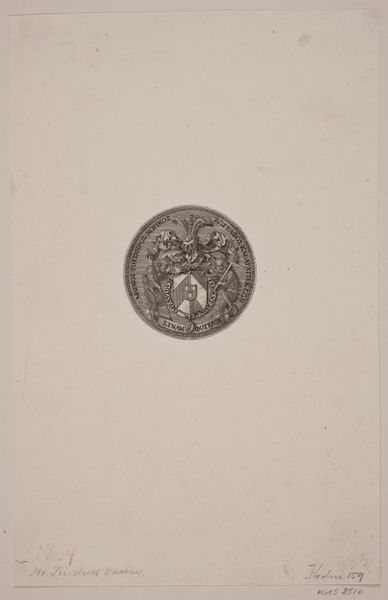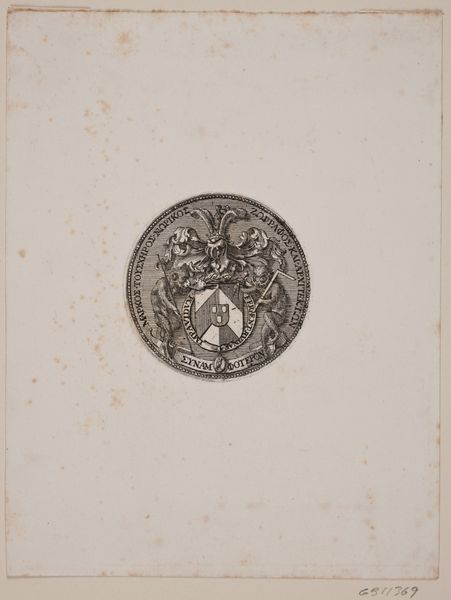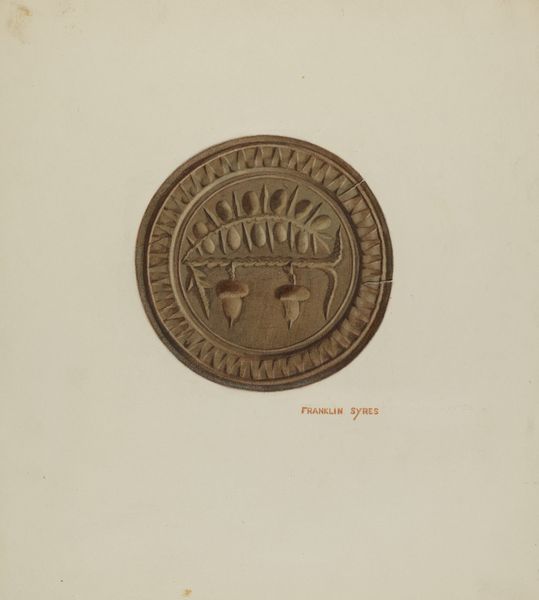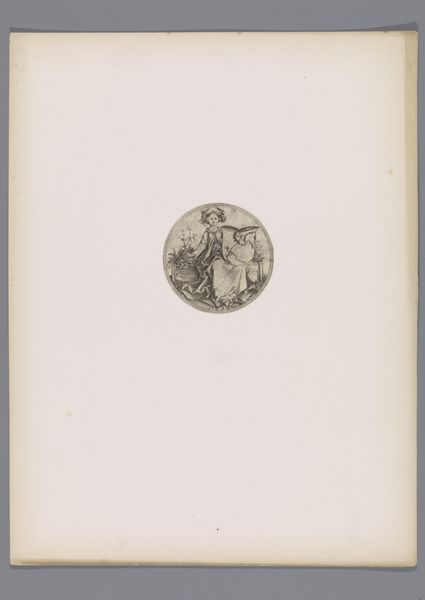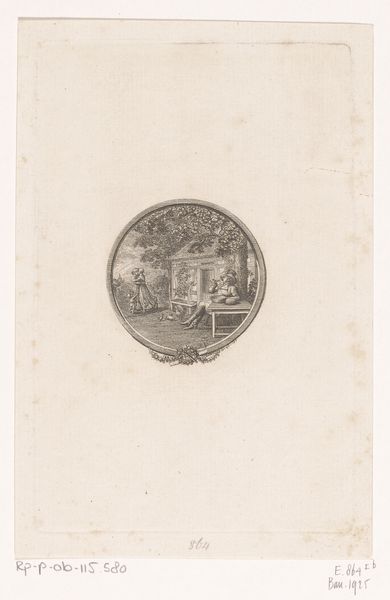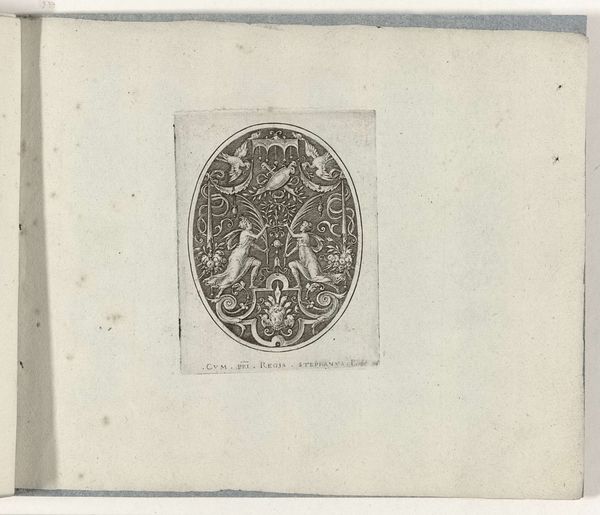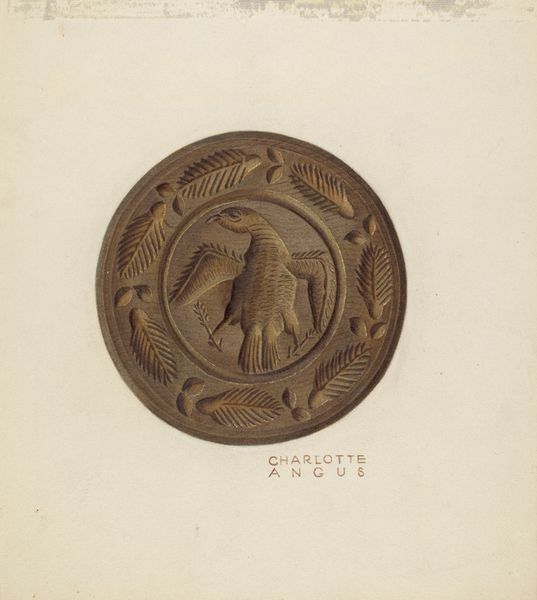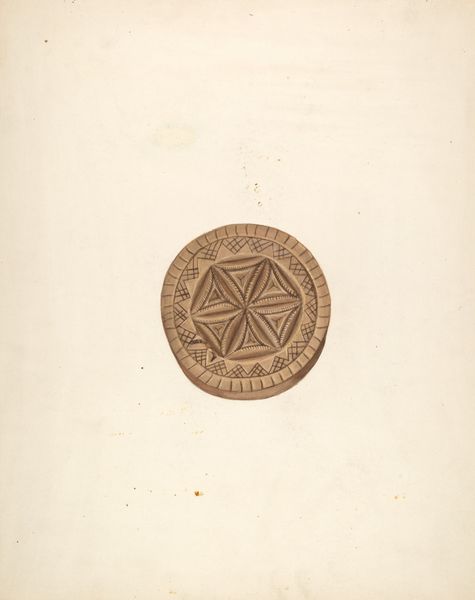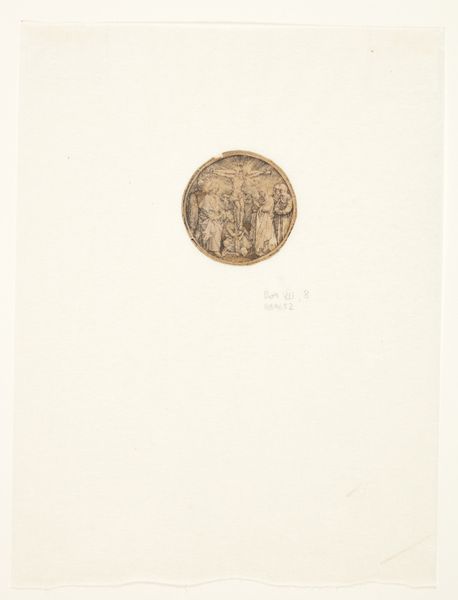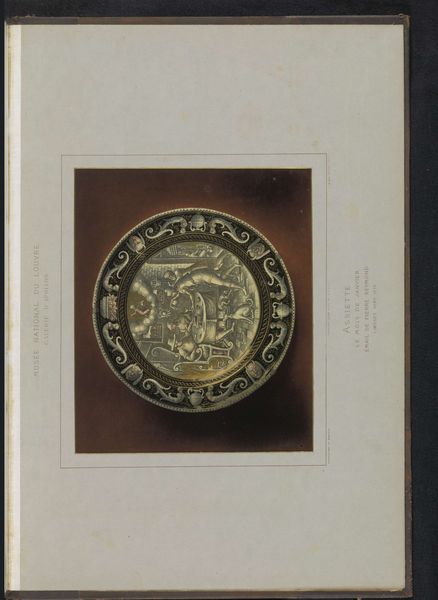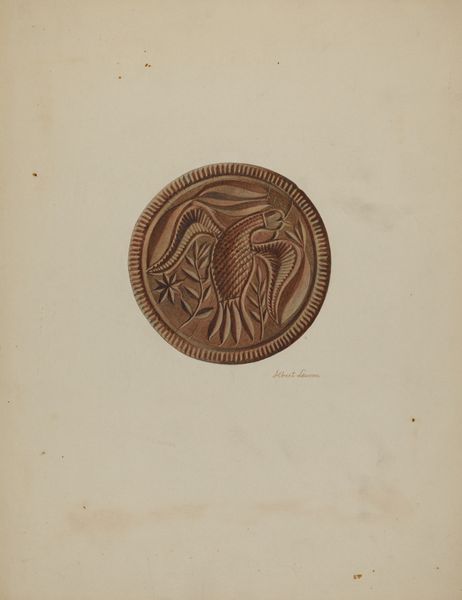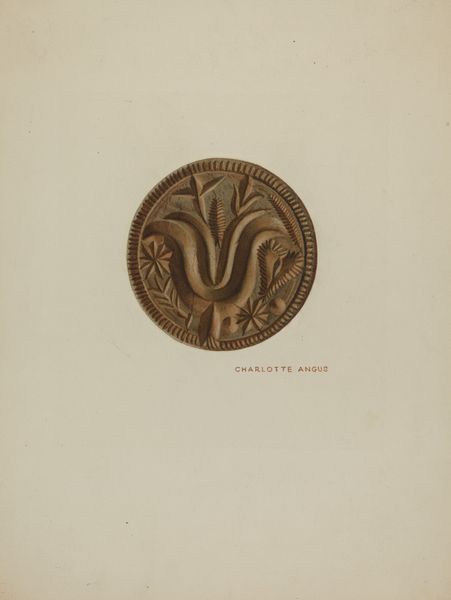
print, engraving
#
baroque
# print
#
geometric
#
line
#
engraving
Dimensions: 69 mm (None) (plademaal)
This is Marcus Tuscher's "Tuscher's våben," an engraving made sometime in the first half of the 18th century. Engraving is an intaglio process, which means that the image is cut into a metal plate, typically copper. Using a tool called a burin, the artist precisely carves lines into the surface; these grooves then hold ink, which is transferred to paper under high pressure. Look closely at the crisp, deliberate lines that define the heraldic shield and surrounding ornamentation, it attests to the artist’s skill. The process speaks volumes about labor and value. Each line represents time, precision, and expertise. Engravings like this were often commissioned, reflecting the patron's desire for status and permanence. The act of engraving, with its demand for meticulous craftsmanship, elevates the image beyond mere decoration to a statement of identity and power. So, when you look at "Tuscher's våben," consider the artistry, the labor, and the social context that shaped its creation. It’s not just an image; it's a testament to the enduring power of craft.
Comments
No comments
Be the first to comment and join the conversation on the ultimate creative platform.
